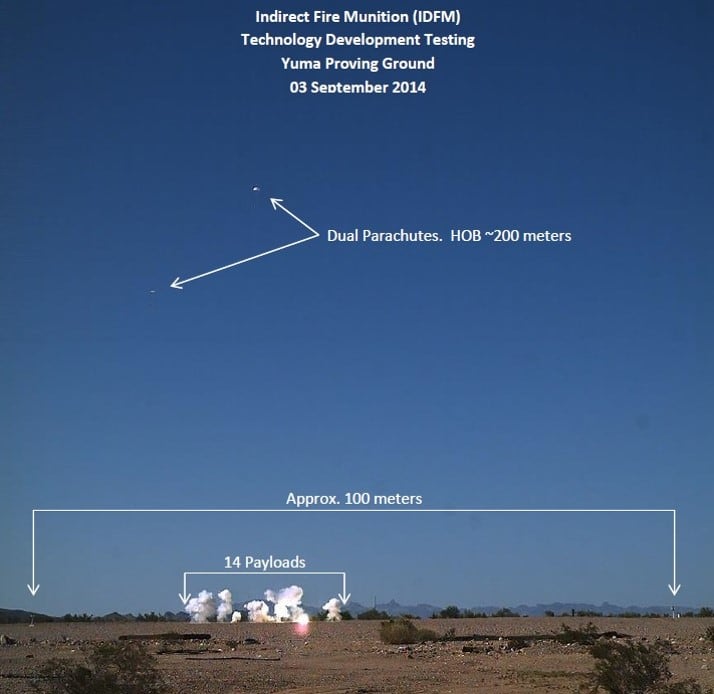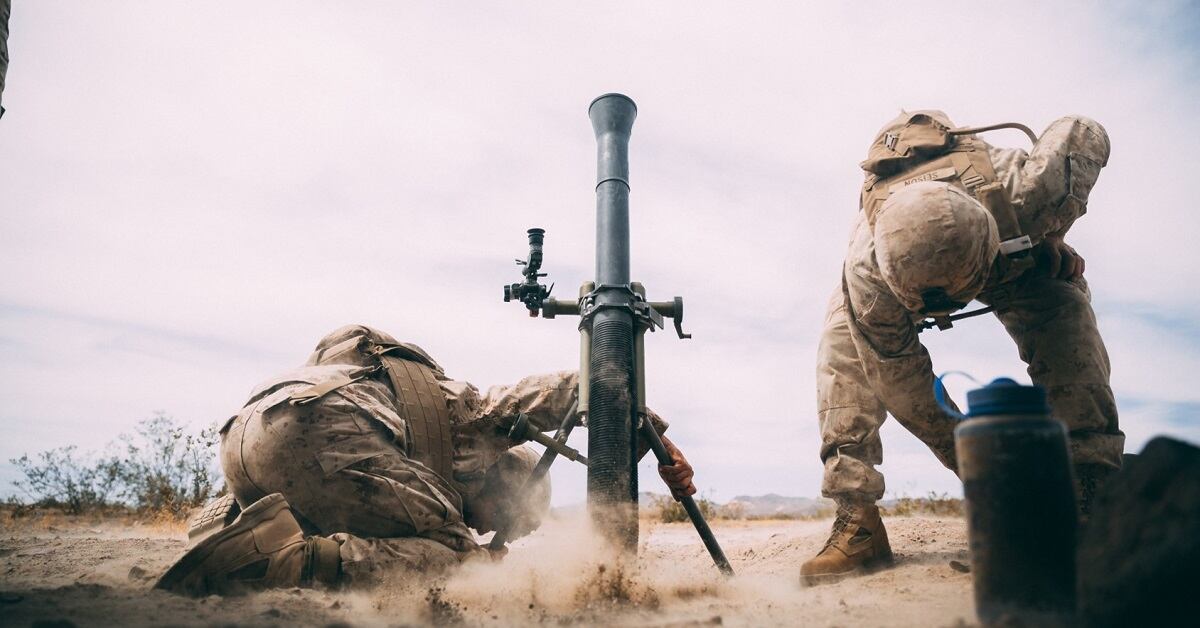The Marine Corps has for the first time field-tested new flash-bang mortar rounds during the 2018 Rim of the Pacific exercise in Hawaii.
While standard mortar rounds are designed to strike and destroy targets, these new, less-lethal rounds can be timed to airburst over the heads of individuals.
From more than 1 km away, troops could fire off what has been dubbed the non-lethal indirect fire munition, or NL-IDFM, which brings to bear the equivalent of 14 stun grenades simultaneously, according to a release from the Defense Department’s Non-Lethal Weapons Program.
The burst is designed to deny enemy forces access to an area, or provide cover for troop movements, while minimizing the possibility of collateral damage and risk to both civilians and friendly forces.
Marines lobbed 56 of the flash-bang mortar rounds during a field test Monday at Pohakuloa Training Area on Hawaii’s Big Island, Stars and Stripes reported. The field-test is reportedly the first for the system, which is comprised of traditional 81 mm mortar rounds and a modified M853A1 illuminating mortar.
However, the system has undergone demonstrations since development began more than four years ago.

“Currently the armed forces are unable to deliver non-lethal effects at extended ranges," Michael Markowitch, an engineer involved in designing the munition, said in an Army press release in 2016. “Our goal was to develop a mortar that would be capable of delivering a non-lethal payload at ranges typical of mortar systems.”
"We took our inspiration for our design from the family of illumination mortars. They use parachutes attached to an illumination candle to slow its descent and illuminate an area. The team determined that similar designs could be used to control the descent of the metal parts,” Markowitch added.
This first field-test occurred during this year’s Rim of the Pacific exercise, which occurs every two years and involves more than 20 nations and dozens of warships.
The modified round is compatible with existing 81 mm mortar tubes and flies through the air like a standard mortar. The round’s effective range is between 450 and 1,500 meters.
When the round is roughly 250 meters above the target, a time-delay fuse detonates. The mortar’s nose and tail sections separate and the 14 nonlethal cardboard-encased submunitions are released.
Parachutes also release from the mortar’s nose and tail, and the mortar floats to the ground while the flash-bang grenades fall, stabilized by drag ribbons.
The nonlethal cartridges are designed to detonate simultaneously, covering an area of roughly 30 meters. Each cartridge, like the M84 stun grenade, emits a roughly 180-decibel bang and a flash of more than one million candela within five feet of the initiation spot.
Developers of the system have also shown interest in adding infrared or ultraviolet ink to the mortar in order to paint anyone near the detonation. This could help soldiers identify people in a crowd who may disperse from the impact site, according to the Defense Department release.
The system was developed in part by the Joint Non-Lethal Weapons Program at Quantico, Virginia.
Kyle Rempfer was an editor and reporter who has covered combat operations, criminal cases, foreign military assistance and training accidents. Before entering journalism, Kyle served in U.S. Air Force Special Tactics and deployed in 2014 to Paktika Province, Afghanistan, and Baghdad, Iraq.




